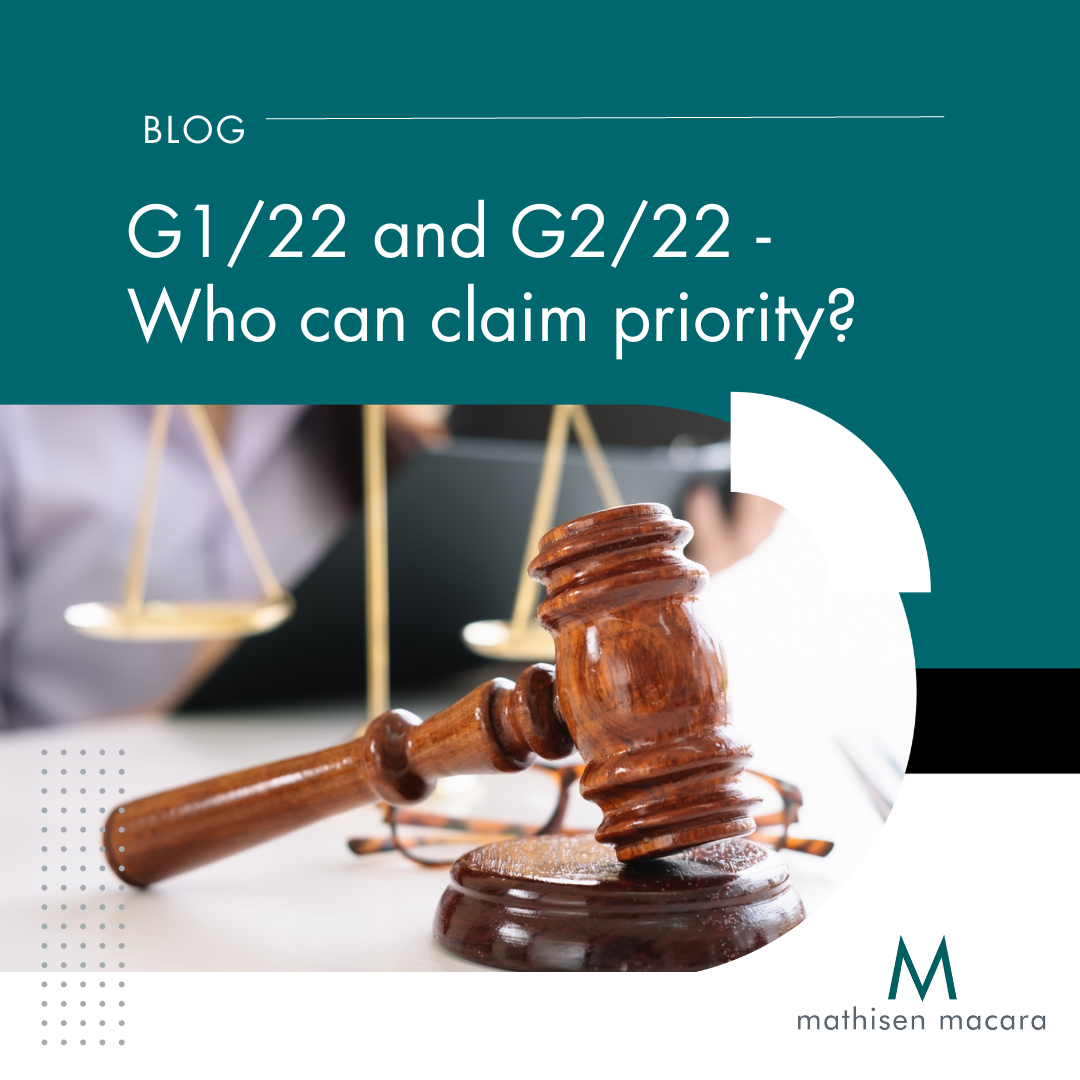G1/22 and G2/22 – Who can claim priority?
A recent landmark decision by the Enlarged Board of Appeal (G 1/22 and G 2/22 (epo.org)), the European Patent Office’s (EPO) highest arbiter on matters of law, has been welcomed by both patent practitioners and patent owners.
At issue was the matter of priority and specifically, who has the right to claim priority for an application filed in the name of joint applicants where the earlier application named only one applicant. This is important as several European patents have been revoked during opposition proceedings, and European patent applications refused by the Examining Division, as the applicant named on the European patent was not the same as the applicant on the priority application.
Two similar cases (T1512/17 & T2719/19) found that the priority claimed from a US application was invalid as not all the inventors had assigned the priority rights in respect of subsequently filed Patent Cooperation Treaty (PCT) applications. As these cases shared the same legal issue, the Enlarged Board of Appeal consolidated the cases as decisions G1/22 and G2/22.
The Enlarged Board answered two fundamental questions:
- Does the EPO even have the legal competence to decide on priority entitlement?
and, if yes,
- Can the co-applicant of a PCT application, who is different from the inventors named in a US priority application, validly rely on the priority right under Article 87(1) EPC?
In answer to the first question, the Enlarged Board reasoned that there is a difference between the right to a patent for an invention and the right to claim priority. The former was found to be a matter outside the realm of the EPO whereas the latter, being entirely governed by the European Patent Convention (Article 87(1) EPC), is within the EPO’s competence.
As for the second question, the Enlarged Board concluded that there should be a strong, rebuttable, presumption that an applicant’s claim to priority is valid. It is to be assumed that all necessary assignments and transfers have been effected. The Board reasoned that because all parties usually wish the application to be successful together with the fact that there are no formal requirements for the transfer of a right to priority, the starting point should be to the benefit of the applicant.
The Enlarged Board did leave the door open for the rarer cases where the right to priority is in dispute, but this decision represents a reversal of the situations found in T1512/17 and T2719/19. It will now be for an aggrieved party to prove that the right to priority has not validly been transferred rather than leave the onus on the applicant to prove that it has. To rebut the presumption of validity, a party will be required to provide specific facts, for example, documentary evidence.
With this decision, the Enlarged Board of Appeal has simplified matters relating to the right to claim priority. This will be received as good news by both applicants and their Patent Attorneys.
